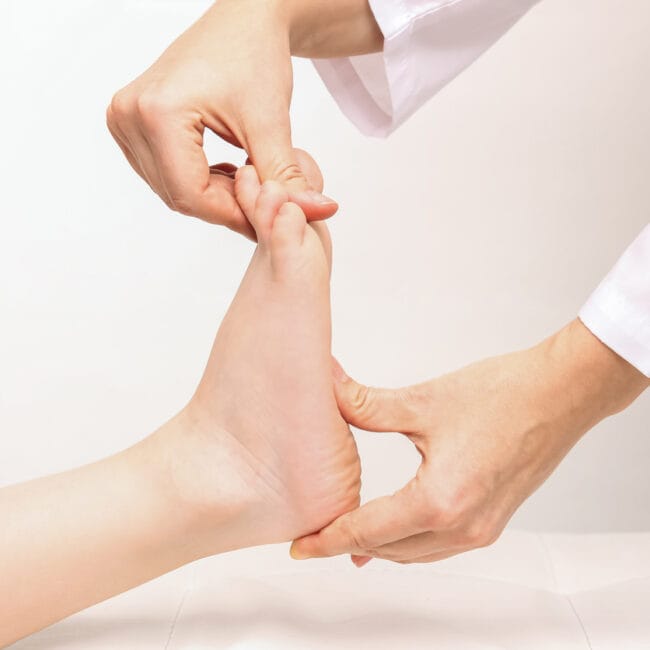Piriformis syndrome is a neuromuscular condition that occurs when the piriformis muscle compresses the sciatic nerve. As both the piriformis muscle and the sciatic nerve are located at least in part in the buttocks, the first symptoms of the condition are tingling or numbness in that area. As the condition progresses, this can turn into a pain that radiates about halfway down the leg, and possibly slightly up into the back as well. Because of the pain associated with piriformis syndrome, sufferers can find that they have a reduced range of motion in the hip.
The piriformis muscle is a small muscle that starts in the lower spine, runs through the buttocks, and connects to the femur. Its purpose is to rotate the hip and enable the legs and feet to turn outward. The sciatic nerve, which is responsible for much of the sensation we have in our legs, runs beside or through the piriformis muscle, before branching off into other nerves.
Understanding this anatomical layout helps us to understand why piriformis syndrome occurs, and explains how a pain in our back or leg can be traced back to the buttocks. Any irritation or compression along the sciatic nerve can lead to pain, tingling, numbness, or weakness that can be felt in the lower back, one leg, or both. In fact, it has been observed that people who frequently sit with their wallets in their back pockets could be irritating the nerve in the same way, which has been nicknamed “fat wallet syndrome”.
Stretching the piriformis could help reduce any swelling, tightness, or spasms that could be irritating the sciatic nerve. Below are two stretches you can try at home:
Lie flat on your back, with your feet flat and your knees bent. Use your left hand to pull your right knee up to your left shoulder, and hold. Then just reverse the instructions and do the other leg. Start the stretches by holding your leg for 5 seconds, but increased the amount of time held each time until you reach 30 seconds. Ideally, you should do this stretch three times a day.
The second stretch is not for the piriformis muscle directly, but the hamstring, which will have an influence on any type of sciatic pain. To stretch the hamstring, set up two chairs facing each other, and sit on one. Put your foot up on the other chair, and lean forward as if to touch your toes. You don’t actually need to touch your toes for this stretch (although you can if you’re able to), as stretching until you feel a small tug in the back of the thigh is sufficient.
Apart from wallets, piriformis syndrome is usually brought on by excessive running, or frequent and prolonged kneeling. While the above stretches will help to alleviate the symptoms of piriformis syndrome, it is also necessary to identify what caused it to occur in the first place, and make any necessary behavioural changes to avoid reoccurence.














